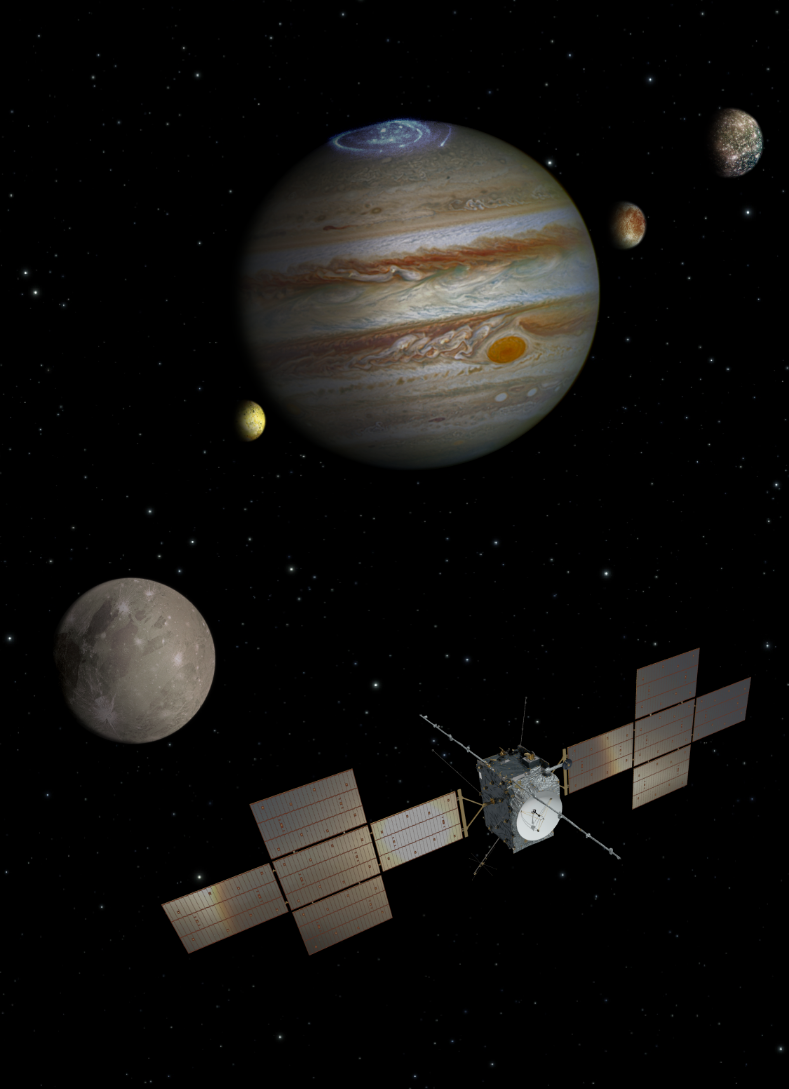
University of Bern on board a mission to Jupiter
The European Space Agency ESA’s Juice space mission began its journey to Jupiter on April 13, 2023. Once arrived, one of the goals of Juice is to search for traces of life on three of Jupiter’s icy moons. The University of Bern is contributing the NIM mass spectrometer to the mission and is involved in two other instruments: the SWI Sub-millimeter Wave Instrument and the GALA Laser Altimeter.
The European Space Agency ESA’s Juice (Jupiter’s Icy Moons Explorer) space probe began its journey to Jupiter on board an ARIANE 5 rocket launched from Europe’s Spaceport in Kourou, French Guiana, on Thursday, April 13, 2023 at 2:15 p.m. After a roughly eight-year journey, Juice will arrive at Jupiter to explore the largest planet in our solar system and three of its more than 80 moons. These are the icy dark worlds Ganymede, Callisto, and Europa, ocean worlds where the average surface temperature is below minus 140 degrees Celsius.
The Juice mission aims to answer fundamental questions about the formation of Jupiter and its moons – and it also involves the search for signs of life. Ten scientific instruments are on board Juice. The University of Bern is contributing the NIM mass spectrometer (which is part of the Particle Environment Package PEP) to the mission and is involved in two other instruments: the SWI Sub-millimeter Wave Instrument and the GALA Laser Altimeter.